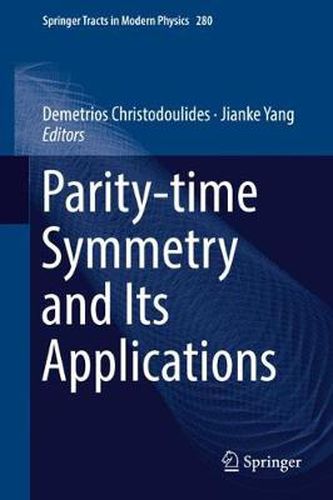Readings Newsletter
Become a Readings Member to make your shopping experience even easier.
Sign in or sign up for free!
You’re not far away from qualifying for FREE standard shipping within Australia
You’ve qualified for FREE standard shipping within Australia
The cart is loading…






This book offers a comprehensive review of the state-of-the-art theoretical and experimental advances in linear and nonlinear parity-time-symmetric systems in various physical disciplines, and surveys the emerging applications of parity-time (PT) symmetry. PT symmetry originates from quantum mechanics, where if the Schrodinger operator satisfies the PT symmetry, then its spectrum can be all real. This concept was later introduced into optics, Bose-Einstein condensates, metamaterials, electric circuits, acoustics, mechanical systems and many other fields, where a judicious balancing of gain and loss constitutes a PT-symmetric system. Even though these systems are dissipative, they exhibit many signature properties of conservative systems, which make them mathematically and physically intriguing. Important PT-symmetry applications have also emerged. This book describes the latest advances of PT symmetry in a wide range of physical areas, with contributions from the leading experts. It is intended for researchers and graduate students to enter this research frontier, or use it as a reference book.
$9.00 standard shipping within Australia
FREE standard shipping within Australia for orders over $100.00
Express & International shipping calculated at checkout
This book offers a comprehensive review of the state-of-the-art theoretical and experimental advances in linear and nonlinear parity-time-symmetric systems in various physical disciplines, and surveys the emerging applications of parity-time (PT) symmetry. PT symmetry originates from quantum mechanics, where if the Schrodinger operator satisfies the PT symmetry, then its spectrum can be all real. This concept was later introduced into optics, Bose-Einstein condensates, metamaterials, electric circuits, acoustics, mechanical systems and many other fields, where a judicious balancing of gain and loss constitutes a PT-symmetric system. Even though these systems are dissipative, they exhibit many signature properties of conservative systems, which make them mathematically and physically intriguing. Important PT-symmetry applications have also emerged. This book describes the latest advances of PT symmetry in a wide range of physical areas, with contributions from the leading experts. It is intended for researchers and graduate students to enter this research frontier, or use it as a reference book.